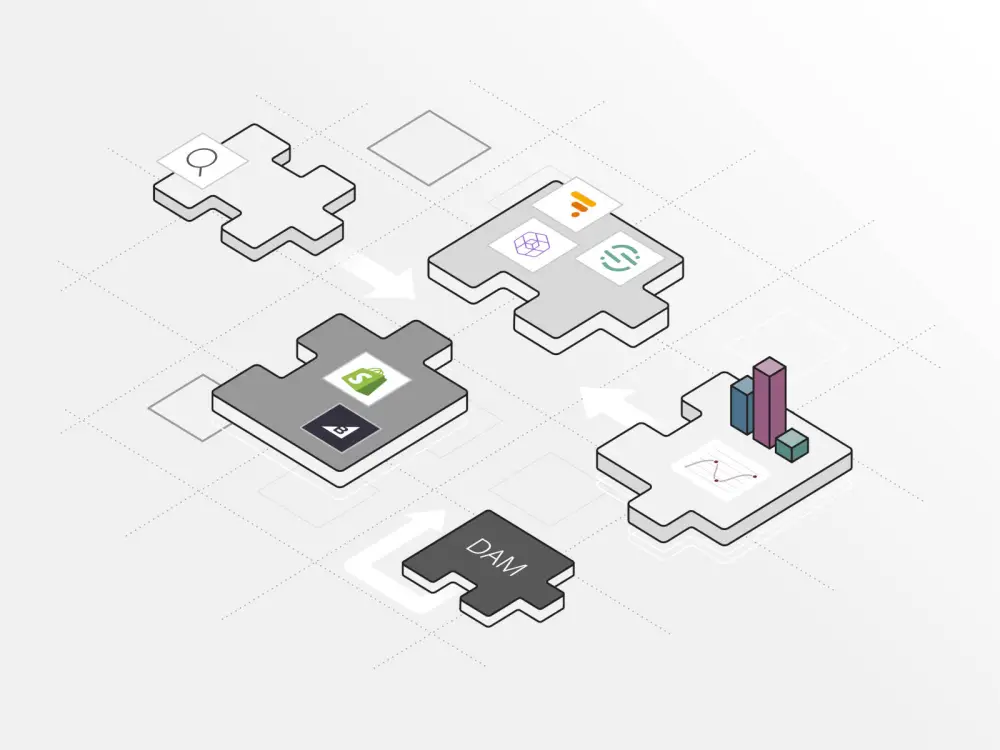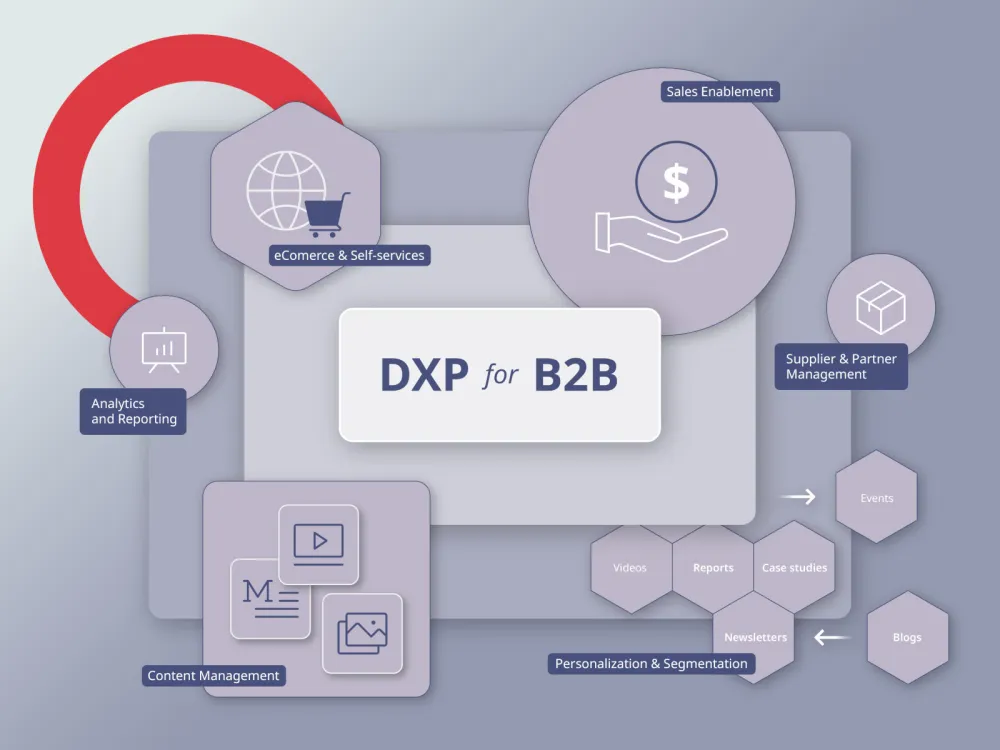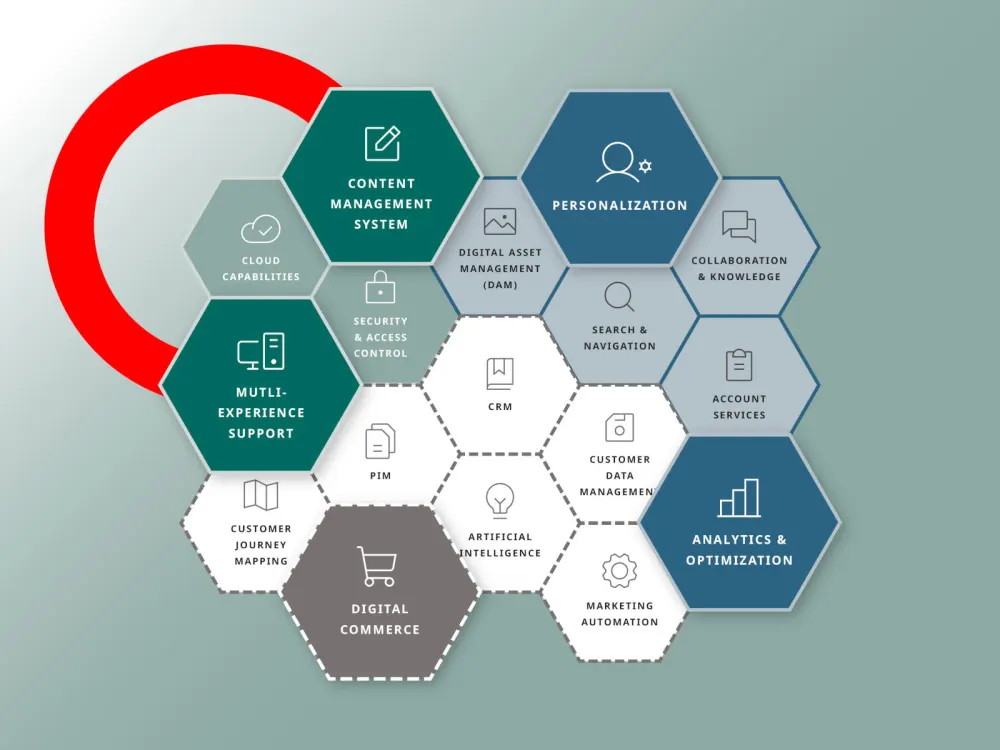Broadly speaking, a digital experience platform (DXP) is an integrated suite of technologies designed to develop, execute and optimize digital experiences across all your customer touchpoints.
It’s an emerging type of enterprise software that serves the ultimate purpose of facilitating more unified and personalized customer experiences. It builds off your typical content management system (CMS), which is primarily geared toward content editing and publishing, by also incorporating additional features such as personalization, analytics and omnichannel delivery.
In a world where more than 9 of every 10 businesses are engaged in some form of digital transformation, a DXP is the must-have tool. It provides the architecture you need to digitize your business operations, connect all your systems and collect the insights you need to enhance customer engagement.
Let’s break down how that works, shall we?
What does a digital experience platform do?
We know a DXP is an “integrated suite of technologies” based on one common platform and it “builds off your typical CMS.” But that’s a little vague, so let’s unpack it.
First, let’s talk about what a DXP isn’t. A DXP is not:
Module
- A “bucket” of standalone tools
- A website channel or web/mobile app
- A one-way communication channel
- A configuration tool or development platform
- An IT system
- A marketing system
Additionally, a DXP isn’t a monolithic system, either. Instead, it’s the core technological base that supports the entire customer journey across all digital platforms. You can use it to deliver digital experiences through essentially any channel — the web, social media, IoT, AR/VR, digital assistants and even interactive digital kiosks.
It’s built on APIs, supports headless, hybrid and traditional architectures, and facilitates modern web app development. That includes single-page applications (SPAs) and progressive web apps (PWAs).
A DXP fosters ongoing engagement with customers beyond traditional, one-way communication channels. It also creates a collaborative workspace where both business and technical teams work together to enhance the customer experience. All of these capabilities allow it to be remarkably agile. Building one for your company means you can make quick adjustments in response to evolving market demands and customer expectations.
Key components of a DXP
Although DXPs are more than just a bunch of standalone tools meshed together, it’s safe to say you won’t find one product that does everything you need it to. Yes, there are standalone DXP suites, but they don’t meet most organizations’ needs very effectively. After all, everyone’s omnichannel strategy is different.
Most DXPs are built on a microservices architecture, meaning they come with multiple connected modules that are all part of the same underlying system. This means the final product is a wholly customized solution tailored specifically to your organization’s needs.
Here are some of the interconnected components you might find in a DXP:
- Content management systems (the heart of every solution)
- Personalization tools (for targeting and segmentation)
- Customer/partner relationship management
- Content and experience analytics
- Digital asset management
- Customer service
- B2B/B2C commerce
This may or may not cover all your customer touchpoints. If it doesn’t, you’ll also integrate these systems with your customer relationship management (CRM), social media, marketing automation, commerce platforms or other external apps/portals using APIs.
The evolution from traditional CMS to modern DXPs
We saw the first CMSs gain popularity in the late 1990s. They were simplistic systems designed for non-technical business users to manage static web content. At a time when IT systems were unaffordable and web development was in its infancy, CMSs filled a critical gap.
The rise of social media, user-generated content and the expanding array of digital channels changed all of that, though. Now there are as many as 500 touchpoints between the moment someone becomes aware of your brand and the day they finally make a purchase.
Module
As the customer journey became more complex, standard CMSs started to show glaring issues, such as the following:
- Extensive tech stacks with limited integration
- Information buried in silos
- Poor design and content personalization
- Unreliable marketing analytics
- A lack of flexibility and scalability
More than half of today’s customers interact with companies on three to five channels, and plenty use six or more. Plus, the modern purchase journey is non-linear and differs from one customer to the next.
Really, the demand for a solution was bi-directional—customers continuously want more personalization and less friction, and companies want to deliver that. Over time, advancements in technology naturally led to the rise of DXPs, which are, in many ways, more agile and capable versions of their CMS predecessors.
DXPs are reshaping and redefining digital strategies
McKinsey research finds that today, more than 70% of consumers consider personalization a basic expectation.
And who could blame them?
Consumers are seeing Instagram ads for products they were talking to friends about 30 minutes ago. The new restaurant they looked up last week is emailing them to say they have a reservation available tomorrow night.
DXPs help companies meet those expectations in a number of ways:
- A unified login point for executing CX tasks
- The same content delivered across multiple channels
- CRM, contact center and social media integration for a 360-degree view of customers
- Open-ended architecture that supports scalability and rapid technological evolution
- Centralized data management with customer data platforms like Tealium
The future is flexible with DXPs
Assembling your DXP requires quite a bit of foresight. You have more options than you can count. The features, CMS integrations and add-ons you ultimately choose will depend on several factors: budget, business goals, user preferences and how you engage your customers.
But one thing is for certain: the game has changed.
The risk of disruption is absolutely real. But so is the opportunity to differentiate through better customer experiences. Forward-thinking business leaders have an imperative to implement modern DXPs, and they’re doing it sooner rather than later.
Brightspot’s hybrid architecture offers the flexibility to use predefined front-end templates, create your custom front end (i.e., headless) or combine both approaches. That way, you can deliver consistent, captivating experiences on any device. Plus, Brightspot effortlessly integrates with any database or system you need it to. Learn about it here.










